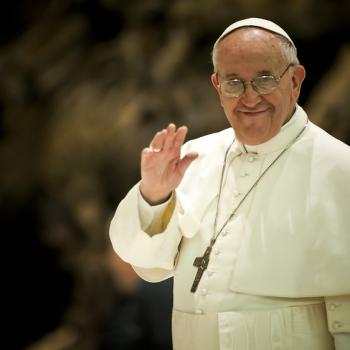Chapter 16 (pp. 141-145) of my book, Reflections on Radical Catholic Reactionaries (December 2002; revised second edition: 17 August 2013; slightly revised again in November 2023 for the purpose of the free online version). Anyone who reads this book should first read the following three introductory articles, in order to fully understand the definitions and sociological categories I am employing:
Introduction (on the book page)
Definitions: Radical Catholic Reactionaries, Mainstream “Traditionalists,” and Supposed “Neo-Catholics” [revised 8-6-13]
Radical Catholic Reactionaries: What They Are Not [9-28-21]
If you’re still confused and unclear as to my meanings and intent after that, read one or more of these articles:
Rationales for My Self-Coined Term, “Radical Catholic Reactionaries” [8-6-13]
My Coined Term, “Radical Catholic Reactionary”: Clarifications [10-5-17]
Clarifying My Coined Term, “Radical Catholic Reactionary” [4-3-20]
This book is modeled after the method and structure of the French mathematician and Catholic apologist Blaise Pascal’s classic, Pensées (“thoughts”). Catholic apologist and philosopher Peter Kreeft described this masterpiece as “raw pearls” and “more like ‘sayings’ than a book . . . ‘Sayings’ reflect and approximate the higher, the mode of Christ and Socrates and Buddha. That’s why Socrates is the greatest philosopher, according to St. Thomas (S.T. III, 42, 4).”
*****
- Schism has shown itself to be far more long lasting historically, whereas heresies often die out (completely or substantially). In that sense, one might say that schism poses a greater threat to the Church and to souls. If the pope were to crack down on the American Catholic “church” with the full vigor radical Catholic reactionaries and many “traditionalists” and so-called “conservatives” call for, we can be sure that wholesale schism would result. That is a tragic eventuality to be avoided at all costs, as the harm to souls and the Church would be arguably far greater than that caused by the modernist crisis.
- The pope is, therefore, between a rock and a hard place with regard to modernist dissent and domination of Catholic institutions such as seminaries, schools, and dioceses. Those who counsel a new Inquisition are greatly lacking in historical hindsight and prudential wisdom, in my opinion, which is odd, since they ought to know that modernists are every bit as devoted to their cause, and will fight tooth and nail to retain their worldly power and influence. This was all obvious by 1968 at the latest, when we observed the shocking organized resistance to Humanae Vitae.
- One reactionary wrote fondly of the “spirit of the ‘old Traditionalists.’” One can perhaps see the potential seeds of yet another sect developing, out of this rhetoric. Such is the inevitable destiny of all who leave the Church, either formally, or in a perilously close spirit of disobedience and “material” schism. “Old Catholics”; “Old Traditionalists”; “Old Believers” (self-described “traditional” Orthodox in Russia); “Old Order Amish”; “Old-Fashioned Fundamentalism.” One detects a certain pattern . . . . reactionaries keep closing the circle of “true believers” tighter and tighter, until (theoretically) there could be ten people in the whole world who constitute the “Catholic Church.” That doesn’t sound like the One True, Universal, Catholic Church. The folly and falsity of this is obvious, but the lure of felt importance that comes with the self-understanding of being the “pure remnant” can overcome all tradition and common sense and rational Catholic thought.
- Technically, the views expressed by many reactionaries might be orthodox and non-schismatic, but when all is said and done, the views are so close to schism and disobedience (with the pope and Vatican II railed against so incessantly), that in a very real practical (or what one might call a psychological) sense, there is virtually no difference. And this extremist, separatist mindset seems impervious to all reasoning and appeal to any Church teaching whatever.
- Orthodox Catholics (so-called “conservatives” or “neo-Catholics”) embrace (doctrinally speaking) Protestants and non-Christians to the extent that they agree with Catholic teaching, and with truth itself. I haven’t anathematized reactionaryism. I have made analogies in this book to false beliefs and mindsets, and argued that it indicates a “quasi-schismatic mentality,” etc., but I continue to call reactionaries Catholics. If anything, reactionaries are the ones who often imply that people of my category are out of the faith, since it is constantly insinuated that we are in cahoots with, and compromised over modernism, which we both alike despise as heterodox and barely Catholic, if at all.
- What reactionaries are doing is precisely what the liberals did with regard to Humanae Vitae. They reasoned that it wasn’t infallible in the extraordinary sense; therefore they could disobey it. This is the very root of the current modernist crisis as outwardly manifested in the Church. And the irony is that reactionary thought adopts exactly the same skepticism and disobedience towards certain papal pronouncements.
- Reactionaries are more schismatic and culpable than Luther and Calvin in some respects, because as Catholics, they know better, and besides, the dogmas of both papal and conciliar infallibility are both much more certain now than in 1521 — the former having been defined in 1870 and the latter coming close to that in Vatican II. Luther, therefore, could dissent with strong Catholic tradition while not technically disobeying a defined dogma. Reactionaries have no such excuse (and it is a tenuous one even in Luther’s case).
- Reactionaries, in effect (by their behavior and mentality) or in actuality, deny defined dogmas and canon laws in disobeying the pope and undermining and insulting an ecumenical council. Reactionaries want the (Second Vatican) Council and they don’t want it; they want papal authority, but they want the right to disbelieve this particular papal pronouncement. And so on and so forth. I wouldn’t be a member of the Catholic Church for a minute if I believed this.
- Modernism is not officially sanctioned on the magisterial level. It is tolerated by many bishops in practice, but this is no new thing, either (St. John Fisher was the lone faithful bishop in England at the time of Henry VIII), and is not nearly as easily dealt with as reactionaries seem to think. Heresy must be dealt with slowly and with great tactical and strategic wisdom, but it can be decisively defeated in the long run. Schism, on the other hand, is much more historically long-lived, as we see in the Orthodox-Catholic split, which is now 959 years old, and Nestorian and Monophysite sects which persist to this day (1560-1580 years old). So the Church must be very prudent in how it deals with heretics and dissidents in its own fold, lest they create a widespread schism that is to be avoided at all costs, for the sake of souls. It has not compromised its doctrine or moral theology, so the real debate here is in the particular strategy that should be adopted to “crack down” on heresy and dissent. Pope St. John Paul II has ingeniously, brilliantly upstaged the liberals and set the wheels in motion for what is now inevitably a tremendous defeat for the modernists and their entire agenda.
- The reactionary way of thinking is little different from Martin Luther’s at the Diet of Worms in 1521. All the primary ingredients are present: incessant doubt, belief that the Church can actually be enclosed in a “Babylonian Captivity,” the spurning of authority; disobedience to superiors, an almost cynical skepticism, a pessimistic disbelief in God’s promise to protect His Church from error, hyper-rationalism, a sectarian, nitpicking, quasi-schismatic mentality, selective espousal of authority and magisterial decrees, with the ultimate criterion being one’s own private opinion. This is not the Catholic spirit. Why even have binding authority at all, if people refuse to acknowledge it, and live consistently under it? That was never God’s plan.
- As for the disciplinary question of how the Church ought to deal with modernism, dissenters, theological liberals who no longer hold to its teachings, but who continue to claim the title Catholic, the Church has generally tried to resort to diplomacy and dialogue and patience more so than the instant threats of excommunication and interdict which characterized the Middle Ages. Sure, the Church took a hardline stand with Henry VIII. That was principled. What did it achieve, though?: the loss of England to the Catholic faith (and by extension, all its colonies and its Empire, and the United States as a majority Catholic country), and untold hardships and suffering of Catholics in England, Scotland, and especially Ireland for almost 500 years – in some cases (e.g., Belfast) right up to our own time. We know that the situation in America (in particular) could easily blow up into schism, and almost did in the controversy surrounding Humanae Vitae in 1968, where theologians and bishops flat-out rebelled en masse against Pope Paul VI’s heroic teaching reaffirming the age-old Christian ban on contraception. It is quite reasonable to assume, therefore, that strong, sweeping papal disciplinary actions in America would almost certainly result in a tragic schism. And since schism is to be avoided at all costs, the pope and orthodox bishops must proceed in a slower, more deliberate, long-term fashion. Catholicism is neither Puritanism nor Donatism.
- Reactionaries don’t seem to realize that if the crisis is as grave as they claim (and orthodox Catholics largely agree with them), that it is no easy matter at all for the pope or even the pope and a significant minority of orthodox bishops with some spine, to put an end to it. Reactionaries fail to see what that very level of entrenched crisis and dissent implies for any possible massive disciplinary move to wipe it out. It took the Spaniards 700 years to reconquer their country. Internal dissent and infiltration are even more difficult to weed out, in many respects, than foreign invaders. It won’t take the Church 700 years, but it won’t be accomplished in a day or a week, either.
*
*****
*
Summary: Ch. 16 of my book, Reflections on Radical Catholic Reactionaries (December 2002; slightly revised again in November 2023 for the purpose of the free online version).













